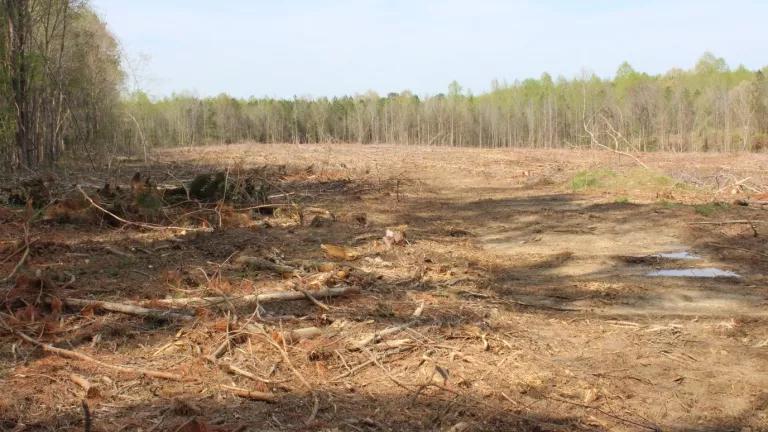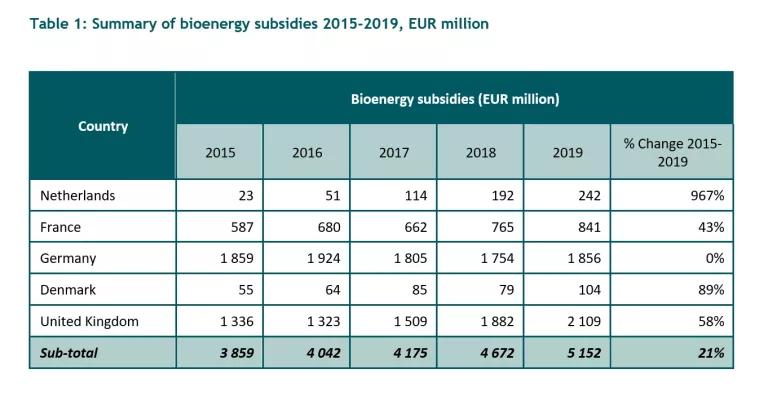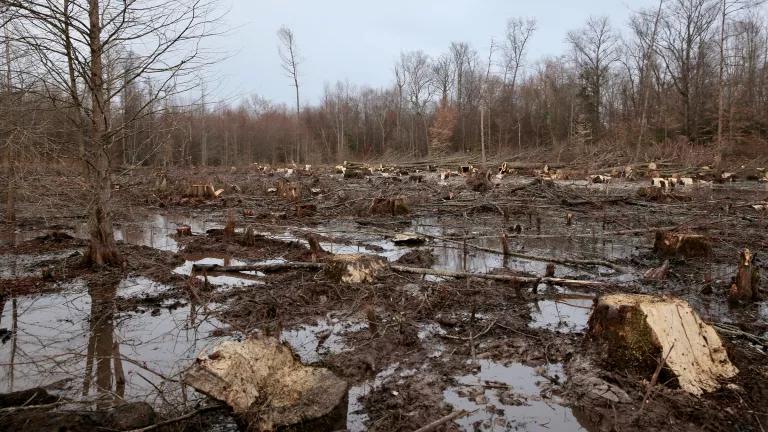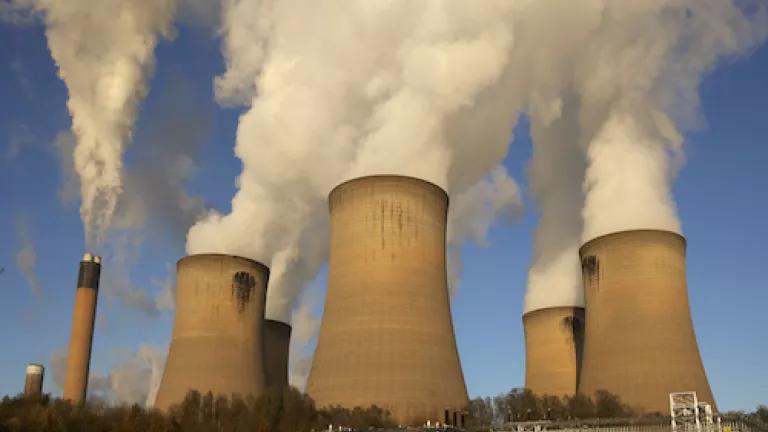EU must follow the science and end tree-burning for energy
Burning wood for electricity is exacerbating climate change, and European wood imports for energy production degrade sensitive and highly biodiverse habitats in the process.

2019 clearcut in the U.S. Southeast. Wood from this site was traced back to Enviva’s Northampton, North Carolina pellet facility.
This post was co-authored by Kenneth Richter, a consultant to NRDC on bioenergy, based in Germany.
Hundreds of scientists from around the world have again rung the alarm-bell for policy makers, warning them about the climate risks of burning forest biomass for large-scale electricity production and urging them to end subsidies and other incentives that are driving the expansion of this harmful technology. The open letter—signed by 500 scientists—was addressed to the president of the EU Commission Ursula von der Leyen, president Joe Biden and the governments of Japan and South Korea (two other major biomass importing countries).
The scientists that authored the open letter—including Jean-Pascal van Ypersele, former chair of the IPCC and Peter Raven, U.S. National Medal of Science winner and former President of the American Society for the Advancement of Science—wrote:
“The burning of wood will increase warming for decades to centuries. That is true even when the wood replaces coal, oil or natural gas . . . To avoid these harms, governments must end subsidies and other incentives that today exist for the burning of wood whether from their forests or others. The European Union needs to stop treating the burning of biomass as carbon neutral in its renewable energy standards and in its emissions trading system.”
We are in the midst of two intersecting crises: climate change and biodiversity collapse. And these issues have only gotten worse since the EU made world-leading commitments to reduce climate pollution and deploy renewable energy alternatives to fossil fuels. What the world needs now is an immediate end to dirty energy; massive investments in clean energy; and a global effort to protect intact forest ecosystems.
The science is now clear: Large scale biomass-burning for energy threatens all three imperatives. The EU must follow the science and put an immediate end to forest biomass subsidies.
European countries use trees and other woody material coming out of the forest—so-called “biomass”—as fuel to generate electricity instead of fossil fuels. This is because the EU has mistakenly labelled electricity from burning biomass as a “zero-emitting” source of renewable energy, on par with genuinely zero-carbon technologies like solar and wind. On the basis of this faulty designation, some EU member states have invested heavily in promoting the largescale biomass-burning for electricity via subsidies and various other state aid schemes to power stations that make this switch.
The result has been startling: Biomass is now burned for electricity across Europe, both in coal plants converted entirely to run on wood and in plants that co-fire coal with wood. In fact, roughly 60% of the EU’s total renewable energy production now comes from bioenergy; much of it from burning wood for electricity and heat.
New data that we published last December on the development of bioenergy subsidies for five European countries (during the period 2015-2019) shows that the Netherlands experienced a ten-fold increase in biomass subsidies over this period, the largest of the five countries, as energy companies took advantage of a new subsidy program. Denmark, France and the United Kingdom also saw large relative increases in bioenergy subsidies of between 40-90% over the period.
In 2019, the United Kingdom overtook Germany to have the highest overall bioenergy subsidies and use of biomass for electricity in the UK has accelerated as already significant subsidies nearly doubled over the relatively short timeframe examined. In Germany, subsidies to solid biomass remained relatively stable over time as growth in bioenergy use for electricity also plateaued.

Source: "Financial support for electricity generation & CHP from solid Biomass" http://trinomics.eu/wp-content/uploads/2020/12/Trinomics-Burnout-updates-2020.pdf
Unfortunately, the truth is that none of these investments will actually help these countries reduce their carbon emissions. The science shows that per unit of energy, biomass power plants emit more carbon dioxide from their smokestacks than coal plants. And cutting down older trees and replacing them with saplings reduces the amount of carbon stored in that forest, even under a best-case scenario in which harvested trees are immediately replanted.
This means it can take anywhere from decades to more than a century for biomass energy to begin to deliver any climate benefit. Even when biomass energy is generated by burning forestry residues—the leftovers from logging operations, like tree tops and limbs—the result is increased CO2 in the atmosphere that lasts for several decades—far outside timeframes relevant to tackling the climate emergency and achieving Paris Agreement targets. We simply don’t have decades to wait.
Not only is burning wood for electricity exacerbating climate change, European wood imports for energy production degrade sensitive and highly biodiverse habitats in the process, in particular the forests of the US and Canada.
This assessment is broadly shared by the EU Commission’s own Joint Research Centre (JRC), which last month published a study warning that 23 out of 24 sourcing practices they investigated for forest biomass pose a threat to the climate and/or biodiversity.
Europe is often seen across the globe as a “leader” on climate action. After all, the European Commission is currently proposing to raise its target for cuts in GHG emissions to 55% by 2030, and an increase in the target for renewable energy (currently 32% by 2030) is also being considered as part of the so-called European Green Deal.
Later this year the European Commission will review its Renewable Energy Directive—the primary policy behind the expansion of burning forest biomass for large-scale energy production in the EU. In order to deliver on the climate promises of the European Green Deal - not just on paper, but in substance - it is essential that the Commission demonstrates true leadership, learns from its past mistakes and follows the science; ending subsidies and other forms of support for the burning of forest biomass for energy.




